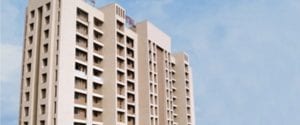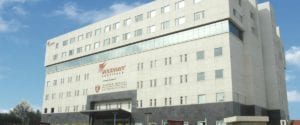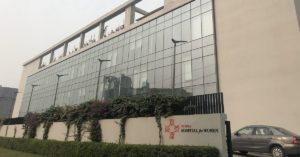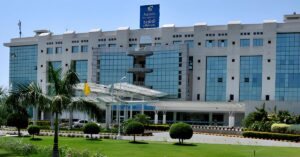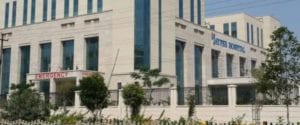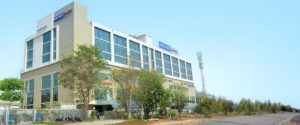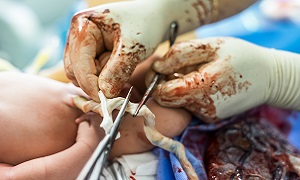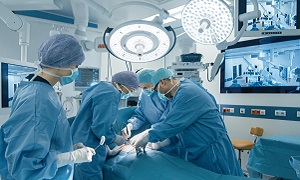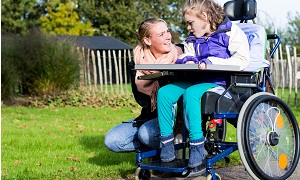Best Doctors in India for Congenital Limb Defect Correction
Best Hospitals in India for Congenital Limb Defect Correction
- City: Gurugram, India
Hospital Highlights:
- W Pratiksha Hospital, Gurugram, is one of the best hospitals in the NCR region. It is also a top hospital in India for IVF. Since its inception, the hospital has performed over 5500 successful IVFs. The hospital also specializes in gynecology.
- With over 20 years of experience in providing quality healthcare, the hospital is known as one of the most trusted and valued health providers in India.
- Equipped with world-class medical facilities and advanced technology, the hospital’s doctors and clinicians also have a track record of delivering excellent results. The hospital is also known for focusing on preventive well-being as much as on curative treatment.
- The hospital has earned the trust of its patients, by providing the best available treatments at affordable costs.
- City: Gurugram, India
Hospital Highlights:
- Paras hospital was established in 2006 and is the 250 bedded flagship hospital of Paras Healthcare.
- The is supported by a team of doctors of international and national repute.
- The hospital is NABH accredited and also the first hospital in the region to have a NABL accredited laboratory.
- The hospital provides specialty medical services in around 55 departments including Neurosciences, Joint Replacement, Mother & Child Care, Minimal Invasive Surgery, Gynecology and Obstetrics, Ophthalmology, Dermatology, Endocrinology, Rheumatology, Cosmetic and Plastic surgery.
- The hospital is equipped with state-of-the-art technologies.
- City: Kolkata, India
Hospital Highlights:
- Fortis Hospital, Anandapur, Kolkata is a world-class super-speciality equipped with the latest technologies in the medical world.
- The hospital is NABH accredited.
- This state-of-the-art facility specializes in cardiology and cardiac surgery, urology, nephrology, neurosciences, orthopaedics, digestive care, emergency care and critical care.
- The hospital, governed by integrated Building Management System (IBMS), has a pneumatic chute system, for quick vertical and horizontal transportation between floors, facilitating speedy transfer of patient specimens, documents, reports, and medicines to the concerned departments.
- The hospital also has a nephrology department with over 28 advanced dialysis units.
- City: Mumbai, India
Hospital Highlights:
- SL Raheja hospital is a 140-bed multi-specialty tertiary care hospital that is being managed by Fortis Healthcare Ltd.
- The hospital is a benchmark in healthcare and medical facilities in the neighborhood of Mahim & the western suburbs.
- L.Raheja Hospital, Mahim has one of the most effective ICU and Casualty care services.
- The hospital provides specialty medical services in Cardiology, Oncology, Neurology, Orthopedics, Mother & Child Care, and in Diabetes.
- City: Mumbai, India
Hospital Highlights:
- Wockhardt Hospitals were established in the year 1973, originally called First Hospitals and Heart Institute.
- Wockhardt Hospitals are super specialty health care networks in India, nurtured by Wockhardt Ltd, India’s 5th largest Pharmaceutical and Healthcare company.
- Wockhardt Hospitals is associated with Partners Harvard Medical International, an international arm of Harvard Medical School, USA.
- Wockhardt Heart Hospital performed India’s first endoscopic heart surgery.
- The hospital has a state-of-the-art infrastructure equipped with the latest technologies and modern equipment.
- It has special Centers of Excellence dedicated to the major specialties to provide hassle-free and high-quality clinical care.
- City: Gurugram, India
Hospital Highlights:
- The CK Birla Hospital in Gurugram is a NABH-accredited multi-specialty hospital.
- The hospital strives to increase the quality of healthcare by focusing on UK NHS nurse and midwife training requirements. Policies and practices derived from the National Institute for Health and Treatment Excellence (NICE) recommendations in the United Kingdom ensuring that a strong focus on safety, high-quality clinical care, and sanitation is maintained.
- The hospital’s cutting-edge technology and facilities allow for real-time communication and seamless collaboration among caregivers, ensuring accuracy and the best possible results. Those with foreign experience and accreditations make up part of the hospital’s team of clinicians.
- City: Ahmedabad
Hospital Highlights:
- As a member of the Apollo Hospitals Group, Apollo Hospitals International Limited, Ahmedabad is one of the most popular and sought-after medical facilities in Gujarat.
- Through its 6 Centres of Excellence and various affiliated branches, which cover all specialties and subspecialties, the hospital provides the most advanced clinical services.
- Since its inception in 2003, the hospital has been providing each patient with the most up-to-date medical equipment and state-of-the-art technology.
- With more than 150 successful organ transplants, including liver and renal transplants, the facility has been able to build a strong and extensive organ transplant program.
- In addition to performing 600 surgeries and caring for over 1800 patients on an IP basis, the hospital sees more than 18,000 patients on average in the outpatient department.
- With one of the biggest cardiology teams in the area, the hospital provides state-of-the-art regional care treatment in Cardiac Sciences.
- Additionally, the hospital offers a broad range of Neuro Interventional techniques to help stroke patients recover more quickly.
- City: Noida, India
Hospital Highlights:
- Jaypee Hospital is the flagship hospital of the Jaypee Group.
- This hospital has commissioned 525 beds in the first phase and has been planned and designed as a 1200 bedded multi-specialty facility.
- It holds the accreditation of the NABH and NABL.
- The hospital has state-of-the-art infrastructure equipped with the latest technologies and modern equipment like 64 Slice PET CT, Dual Head 6 Slice SPECT CT, Gamma Camera, and Da Vinci Robotic Surgery for comprehensive robotic surgical solutions.
- It has special Centers dedicated to the major specialties to provide hassle-free and high-quality clinical care.
- City: Mumbai, India
Hospital Highlights:
- Reliance Hospital is one of the best super-specialty care hospitals in Navi Mumbai.
- The main purpose of this hospital is to become a trustworthy place for the best health and hope for society. The hospital is well connected to the suburbs of Mumbai and Navi Mumbai.
- The hospital has various specialty departments, viz., Accident & Emergency, Anesthesiology, Dental Services, Dermatology, Diabetology, Dietetics Nutrition, Endocrinology, ENT, Gastroenterology, General Surgery, Gynaecology And Obstetrics, Hepato Pancreato Biliary Surgery, Infectious Disease, Internal Medicine, Interventional Radiology, Laboratory Medicine, Minimal Access Laparoscopic Surgery, Nephrology, Neurosciences, Opthalmology, Orthopaedics, Paediatrics, Pain Management Palliative Care, Physical Medicine Rehabilitation, Plastic And Reconstructive Surgery, Psychiatry, Pulmonary Medicine, Radiology, Rheumatology, Transplant, Urology Andrology, Vascular Surgery
- City: Bengaluru, India
Hospital Highlights:
- Fortis Hospital Bannerghatta, Bengaluru was established in 2006.
- The hospital is a 276 bedded multi-specialty tertiary care facility.
- The hospital specializes in cutting-edge medical technology and dedicated patient care services.
- The hospital is equipped with state-of-the-art technologies like trans-radial angioplasty, trans-abdominal cardiac surgery, and computerized TKR navigation surgery.
- The hospital provides specialty medical services in cardiology, cardiac surgery, orthopedics, neurology, neuro-surgery, GI, and Minimal Access Surgery (MAS).
Congenital Limb Defect
Congenital Limb Defect is a medical condition or a birth defect that occurs in unborn babies where the entire upper or lower limb or a section of the limbs fails to form or grow normally leading to limb abnormalities or defects, as commonly known in the growing fetus.
Corrective measures for this condition vary from child to child with the overall corrective procedure aiming to help the child grow up and lead a normal life with the deformity.
Treatment techniques may range from surgical procedures to prosthetics or rehabilitation therapy.
Types of Limb Defects
Primarily there are two types of limb deficiencies, namely,
1. Longitudinal Deficiency- In this condition, there is either partial or complete absence of elements like radius fibula or tibia within the limb.
2. Transverse- In this condition, a portion of the element within the length of the limb is present, but only to a certain point and hence the limb may resemble an amputation stump due to the selective presence of elements in the limb.
Other types may include preaxial polydactyly, a classic example for which can be an extra finger, which may or may not be fully formed. In some rare cases, an extra duplicate ring, middle or index finger can be formed due to central polydactyly and Syndactyly is the webbing of fingers or toe, which is also considered a limb deformity or defect. The doctors or the medical team will help you understand the exact type of defect your child has and a medical treatment method or correction would be suggested based on the condition of the child.
General causes of Congenital Limb Defects
The exact cause for this condition cannot be pinpointed as of yet. However, medical professionals have researched some general causes that tend to cause congenital limb defects in babies. Some of them are-
- Unhostile uterine environment for the baby
- Genetic Conditions passed on by the heredity
- Growth restrictions or unfavourable conditions that affect the fetus development and growth within the uterus.
- Exposure to chemicals while still in the womb
- Intake of certain harsh or strong medications by the mother during pregnancy
Risks Factors for Congenital Limb Defects
Medical professionals list certain risks that might increase the chances of limb deformities or physical defects in unborn babies. Some of them are-
- Tobacco Exposure during pregnancy
- Chemical Exposure during pregnancy
- Mechanical Forces during pregnancy
Diagnosis
Diagnosis of the condition is done immediately after the birth of the baby. Usually, doctors may prescribe X-ray or genetic testing to determine underlying bone conditions or undiagnosed symptoms.
Possible correction or treatment methods
Treatment or corrective measures for this condition depends on the child’s age, weight and general health conditions. Other factors to be considered before deciding on the treatment method includes the baby’s tolerance to medications or therapies and the type of deformity the baby is suffering.
The usual treatment method includes:
Surgery
Prosthetics
Prosthetics are usually recommended for conditions where the entire limb along with its elements are missing.
Rehabilitation
The primary goal for congenital limb defect correction is to-
- Help the child develop the feeling of independence
- Help the child get accustomed to their lifestyle and normal routine despite the condition
- Ensure normal development of the child is not restricted due to this condition
- Cosmetically improve the overall outlook and convenience of the child
- Encourage the child to participate in self-care
Post treatment care & precaution
The initial days can be quite tough, not just for the patient, but for his or her family too. However, helping your child get used to independence and self-care from the very beginning is important since habit-forming attitudes at a tender age stick to you for the rest of your life. Families may try physical therapy at home or through a professional, based on doctor’s recommendations. Families are requested to wholeheartedly support the child suffering the defects and actively help them overcome daily activities or hurdles.
FAQs
What are the chances of my baby having congenital Limb Defect?
Currently, the statistics say 7.9/10,000 live babies can suffer from this condition.
Can ultrasound detect defects in unborn babies?
Ultrasound can often detect physical defects in the unborn baby, so chances are that conditions like congenital limb defects can be easily spotted during the later stages of the pregnancy. However, defects in the kidney, heart, or even certain cleft palate situations go unnoticed in ultrasound.
Can these limb defects be inherited?
95% of limb defects are not based on heredity or family history. However, certain conditions like extra toes or fingers can be due to inherited genes.




